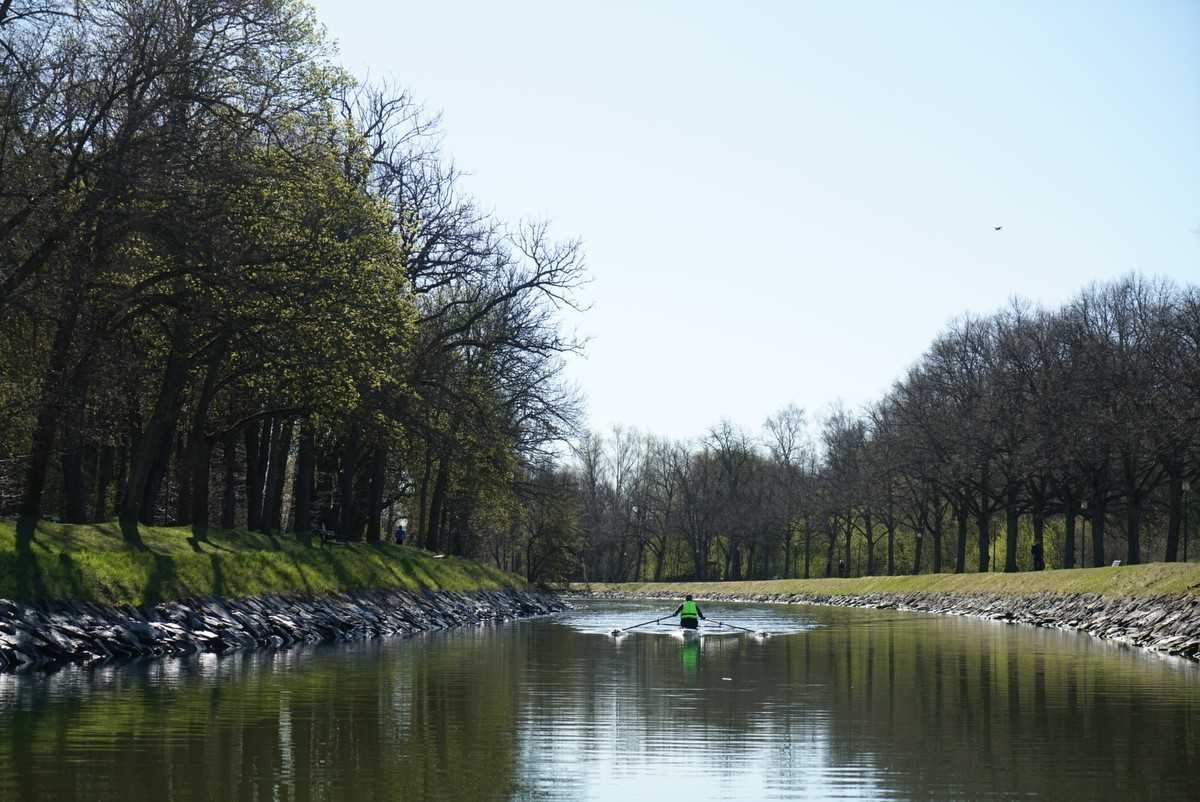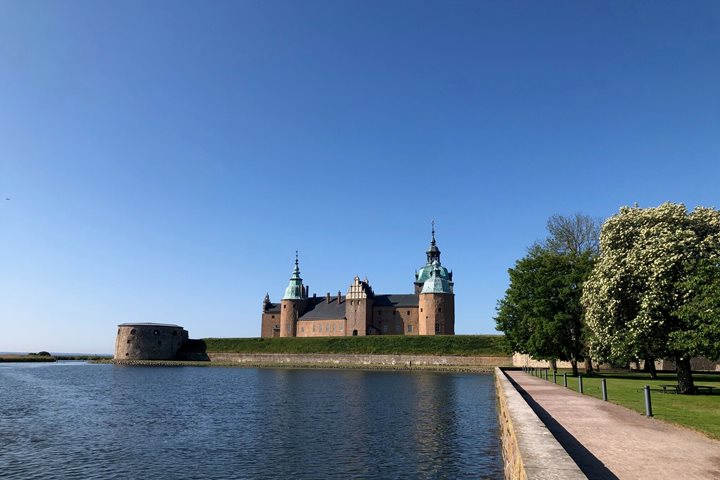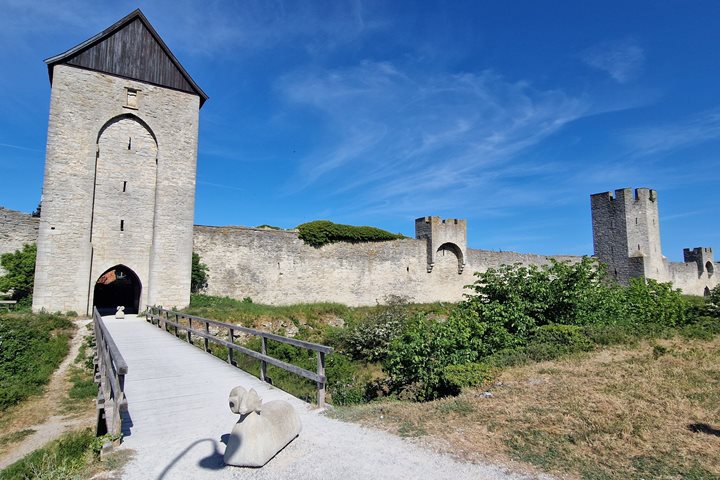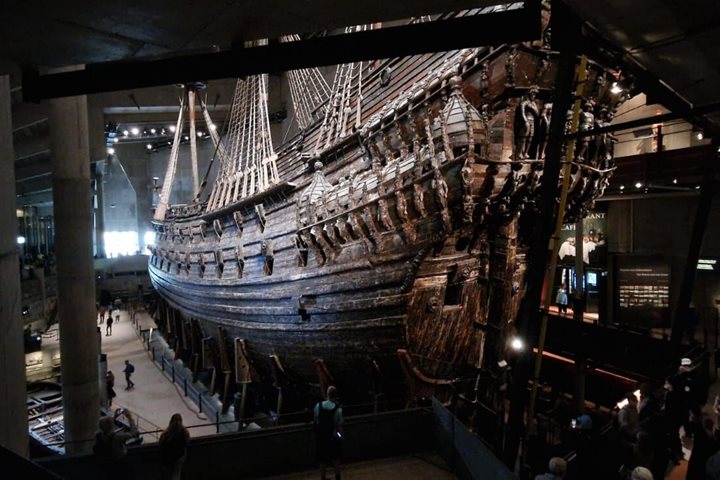A day at sea. Sparkling blue sky, brilliant sunlight, hardly any wind. Smooth sailing.
We left Stockholm in a typically unusual Lindblad way: by Zodiac. Most passengers boarded at 8 in the morning for a leisurely ride from the quayside at Gamla Stan, past two of the 14 islands that make up the city of Stockholm: Skeppsholm (“Island of Ships”) and Djurgården (“Deer-Farm”). Some of the sights were, by now, familiar: the red masts sticking out of the roof of the great Wasa museum, the spires of the Nordic Museum (1907), the Royal Palace and the Opera.
The Djurgården canal was dug through this area in 1834 to enable smaller ships to reach the heart of Stockholm a bit quicker. The deer-farm itself was originally a game park, set up for King John III in 1579. Such a park was both for preservation of the animals – deer, elk, reindeer – but also for private hunting. It is now one of Stockholm’s favorite parks. As we passed at this early hour we saw many Swedes jogging, just walking their dogs, or taking a skiff out on the canal.
Through the trees some of peculiar buildings came into view. The entrepreneur Artur Hazelius constructed Sweden’s first open air museum here, in 1891, bringing together examples of typical Swedish houses, farms and the occasional church spire, and preserving traditional Swedish culture (under threat at that point from modernization). On the other side we passed the American Embassy, the maritime museum, and the museums for technology and ethnography.
In the canal the wind died down, and things got very pleasant in the calm May sunshine, further enhanced by the surprise of meeting our crew with a glass of Buck’s Fizz – just the thing for your early morning workout.
Coming out onto the bay – the Swedes say “fjerd,” where Norwegians would say “fjord” – we met up with National Geographic Orion and soon were on our way into the vast archipelago that separates Stockholm from open sea. Thousands of islands, some with villages on them, some inhabited by colonies of cormorants, most of the islands with just one or two holiday homes, all waiting for spring to really break out. We watched all this pass us by, enjoying a warm cinnamon bun and a cup of spiked cocoa.
The islands feature very large in the life of the Swedes and in their childhood literature. One fine example is Astrid Lindgren’s series of children’s books about life on the island Seacrow.
After that, we settled down for a leisurely day cruising the archipelago and then out to sea, on our way to Finland. There was a little background introduction into the wars of the Baltic between Swedes, Poles, Danes, Germans and Russians, with a little sprinkling of the Dutch thrown in. This is a history of conflict which still casts shadows over the Baltic today, but there were lighter touches too: Peter the Great’s short stay in the Netherlands to learn the technology of shipbuilding firsthand led to the composition of a wonderfully saccharine operetta, “Zar und Zimmerman” – “Tsar and Carpenter.”
There was some Scandinavian licorice to savor, and a brief introduction into the fantastic world of Finnish heavy metal music. Much less saccharine was the brilliant Swedish film that ended this glorious day: Lasse Hallström’s “My Life as a Dog.” Like Lindgren, Hallström portrays Swedish rural society in the 1950s and ‘60s as idyllic and quirky, free from the Victorian constraints of city life – but at the same time telling a heartbreaking story of young Ingemar, who loses his mother and his dog.









